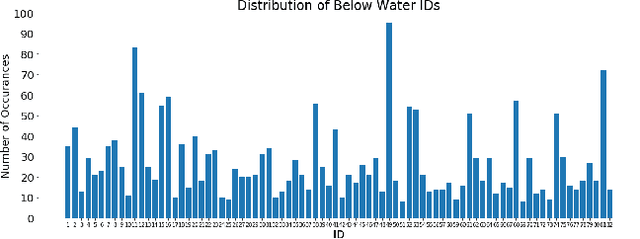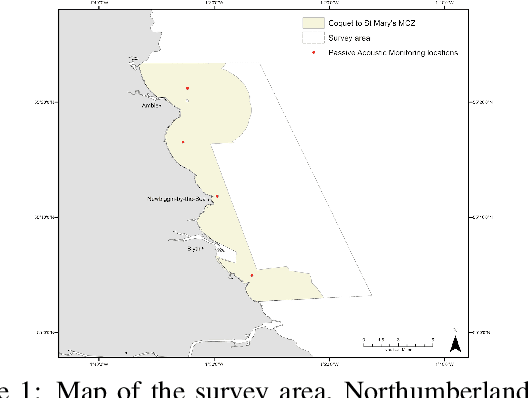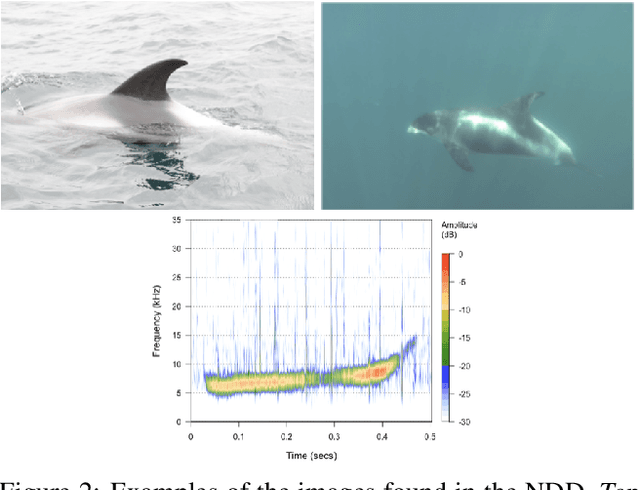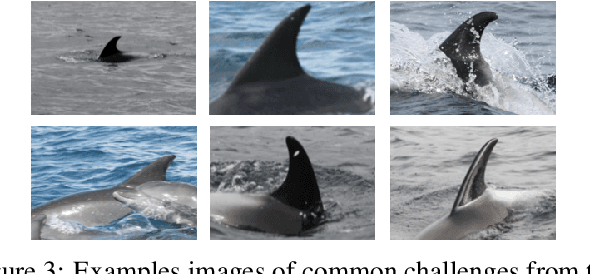Georgia Atkinson
The Effects of Signal-to-Noise Ratio on Generative Adversarial Networks Applied to Marine Bioacoustic Data
Dec 22, 2023Abstract:In recent years generative adversarial networks (GANs) have been used to supplement datasets within the field of marine bioacoustics. This is driven by factors such as the cost to collect data, data sparsity and aid preprocessing. One notable challenge with marine bioacoustic data is the low signal-to-noise ratio (SNR) posing difficulty when applying deep learning techniques such as GANs. This work investigates the effect SNR has on the audio-based GAN performance and examines three different evaluation methodologies for GAN performance, yielding interesting results on the effects of SNR on GANs, specifically WaveGAN.
NDD20: A large-scale few-shot dolphin dataset for coarse and fine-grained categorisation
May 27, 2020



Abstract:We introduce the Northumberland Dolphin Dataset 2020 (NDD20), a challenging image dataset annotated for both coarse and fine-grained instance segmentation and categorisation. This dataset, the first release of the NDD, was created in response to the rapid expansion of computer vision into conservation research and the production of field-deployable systems suited to extreme environmental conditions -- an area with few open source datasets. NDD20 contains a large collection of above and below water images of two different dolphin species for traditional coarse and fine-grained segmentation. All data contained in NDD20 was obtained via manual collection in the North Sea around the Northumberland coastline, UK. We present experimentation using standard deep learning network architecture trained using NDD20 and report baselines results.
The Northumberland Dolphin Dataset: A Multimedia Individual Cetacean Dataset for Fine-Grained Categorisation
Aug 07, 2019



Abstract:Methods for cetacean research include photo-identification (photo-id) and passive acoustic monitoring (PAM) which generate thousands of images per expedition that are currently hand categorised by researchers into the individual dolphins sighted. With the vast amount of data obtained it is crucially important to develop a system that is able to categorise this quickly. The Northumberland Dolphin Dataset (NDD) is an on-going novel dataset project made up of above and below water images of, and spectrograms of whistles from, white-beaked dolphins. These are produced by photo-id and PAM data collection methods applied off the coast of Northumberland, UK. This dataset will aid in building cetacean identification models, reducing the number of human-hours required to categorise images. Example use cases and areas identified for speed up are examined.
 Add to Chrome
Add to Chrome Add to Firefox
Add to Firefox Add to Edge
Add to Edge